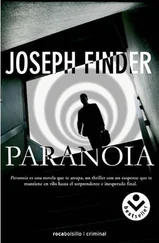“Nick, they’re turning off. They’re approaching what looks like an airport.”
“It’s way too soon to be Dulles.”
“It’s not Dulles, it’s... it’s a small private airport. The Middleton Regional Airport, it’s called. A general aviation airport. They’re turning in there.”
“Oh, shit.”
“What?”
“We’ve got to move it. General aviation means private planes, and private planes means no set schedule. They can take off as soon as they get there.”
The rain had become torrential, coming down in sheets, splashing up from the road. The visibility was poor. We drove in anxious silence, the windshield wipers beating a quick tempo. I took the turnoff onto Route 267, which would become the Dulles access road.
I passed a few slower-moving vehicles, but I couldn’t floor the accelerator. Traffic had slowed to a crawl; I couldn’t go faster than the cars ahead of me. The four-lane highway had given way to two lanes, plus there were traffic lights.
“The dot’s stopped moving. They’ve come to a stop.”
“The airport’s probably ten minutes away. Check the map — is there a faster way?”
“We’re on the most direct route. The exit’s three point five miles ahead.”
But we were moving at no more than twenty miles an hour, so another quarter hour passed before we finally saw a sign that said MIDDLETON REGIONAL AIRPORT NEXT LEFT.
“Is the dot still stationary?”
“Just started moving again.”
“Shit.”
I signaled left, shifted into the leftmost lane, waited at the red light. I had no choice but to wait; the oncoming traffic was steady. I pounded the steering wheel in frustration. Finally the light turned green.
I gunned it. After about two hundred feet, another sign for the airport loomed into view, and I turned into the airport access road. Very soon I reached a parking lot where no more than five or six vehicles were parked. Next to the lot was a chain-link fence that enclosed the tarmac. There was a small brick terminal building, and there didn’t appear to be an airport control tower. A small private airport. I pulled into a space and left the SUV idling.
“What’s the plan, Nick?”
“Is it still moving?”
“No.”
“How accurate is this thing?”
“Very. Up to a foot.”
“So can you figure out where it is?”
She looked at her iPad, swiped at it a few times. “She’s on the tarmac.”
“Or at least her laptop bag is.”
She pointed. “There’s a security booth at the entrance to the tarmac.”
“Okay. Can you get out the scope?”
“The monocular...?”
“The Canon.”
She took out from her bag a pair of 18 x 50 binoculars, and handed them to me. I put them to my eyes, turning them toward the tarmac. Once I got oriented, I located a plane on the airfield and zoomed in on its tail number.
“Could you write this down?” I said. “November one-five-five-X-ray.”
“What’s that?”
“A tail number.”
“Which plane?”
“No idea. Now, how about you go into the terminal building and look for her. See if she’s waiting somewhere. It’s not a big building — shouldn’t take too long.”
“What are you going to do?”
“Drive onto the tarmac.”
“You can’t.”
“We’ll see.”
She got out of the SUV and ducked down in the heavy rain, heading toward the terminal building. I drove over to the perimeter fence gate. There was a booth, but it was dark and empty. The entrance was blocked by a barrier gate arm. I drove up to the booth and found an intercom and a phone handset mounted on its side. A few feet above it was a security camera. I lowered my window, pressed the button, and picked up the phone. Rain doused my shoulder and my sleeve.
After a few seconds, a voice said, “Yeah?”
“I’ve got a load of luggage for November one-five-five-X-ray.”
“One moment...” A pause. Then: “November one-five-five-X, go ahead.”
I hung up the phone and rolled up my window. The barrier gate lifted and I drove on through.
I wasn’t surprised. In most airports, even the big ones, the perimeter security is minimal to nonexistent. For all the ludicrous security measures they put passengers through, the tarmac is the least defended part of an airport. General aviation airports, for private planes, are even more lax. Plus, I was driving a black Suburban, which looked official, like a government vehicle.
Still, I didn’t know where I was going.
I passed a refueling truck, an unmarked low brick building, then the one-story brick terminal building. No one was gathered on the pavement in front of it. No passengers preparing to board. But a small plane, a Cessna, was being refueled from a truck on the tarmac about two hundred feet away. That was the plane. I knew it instinctively. This was no setup. Kayla Pitts had been taken to this private airport to fly her somewhere. Some place she didn’t want to go.
I drove on another hundred feet until I reached a hangarlike building whose overhead door was rolled all the way up. The bright light spilled out onto the asphalt. I could see vending machines, tables, and desks. A few guys standing around. It looked like it might be a pilots’ briefing area. In one glance I saw what I needed.
I parked the Suburban next to the building, alongside a truck. I consulted the iPad once again. The green dot still hadn’t moved. It appeared to be about a hundred feet outside the terminal building. That would be exactly where the Cessna was being refueled. I assumed that meant that Kayla’s luggage, including her laptop bag, had already been loaded into the plane’s cargo hold.
Then I switched off the ignition, got out, and went over to the hangar. On the way, a walk of no more than fifty feet, I got drenched. I entered the hangar looking like a drowned rat. Three guys standing around a coffeemaker, foam cups of coffee in their hands. One of them glanced over at me. I smiled, said, “How’s it going?” and kept on moving to the back corner of the hangar, where a row of rain slickers were hanging on a rack along with reflective vests. They were for the airport maintenance and service crew. I grabbed one, as if it had my name on it, and put it on. Over it I put one of the orange-and-yellow reflecting safety vests. I noticed an array of big Maglite flashlights on a narrow table below the safety vests. I took one and put it in the front pocket of the slicker. It was one of the high-intensity, super-bright, tactical Maglites. They got as bright as five hundred lumens, almost.
If you act like you belong somewhere, most people assume you do. For all they knew I was one of the fixed-base operator crew, starting his evening shift, caught in the rain. The three guys were laughing, saying something about the Redskins game last night. No one said anything to me. I belonged.
My phone buzzed, and I took it out of my pants pocket.
“I found them,” Dorothy said. “Two guys and a girl who looks like Kayla. They’re in the waiting area.”
“Does she look like a captive?”
“She does and she doesn’t. It’s not like she’s in handcuffs or anything, but these two guys look awfully intimidating, and she looks scared.”
“Can you tell if either of the guys is armed?”
“I don’t have the eye for it the way you do, but not from what I can tell.”
“Okay.”
“But please don’t take my word for it, Nick.”
I thought a moment. “I think I see their plane refueling. If you can plausibly hang around there without being detected, keep your eyes on them. I want to make sure they’re not going anywhere but out on the tarmac. Call me if you see any unusual movements.”
I flipped the hood of the slicker up over my head and went back out into the night. The rain was easing a bit by now, less torrential, steadier. The fuel truck was pulling away from the Cessna, having finished the refueling.
Читать дальше












